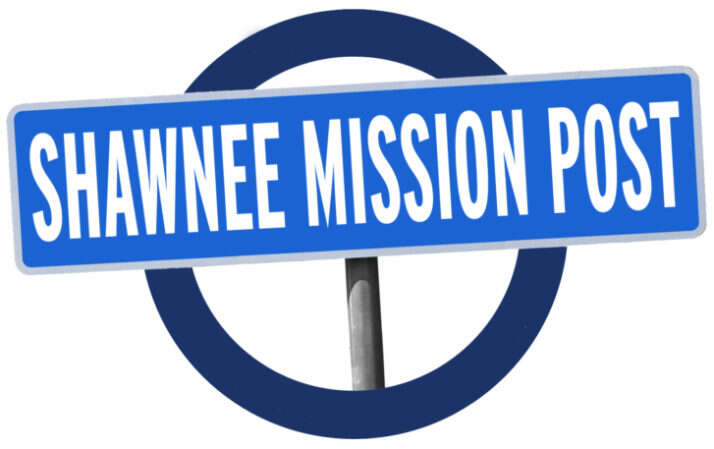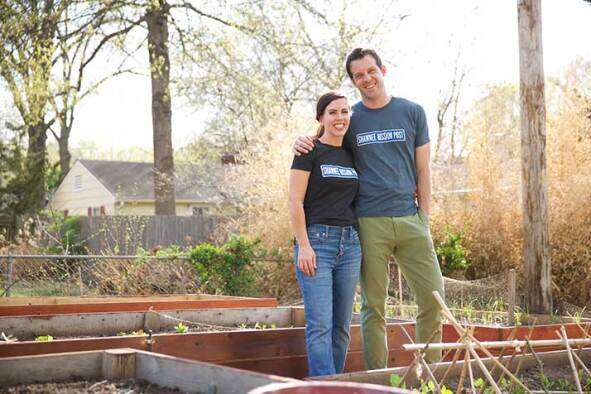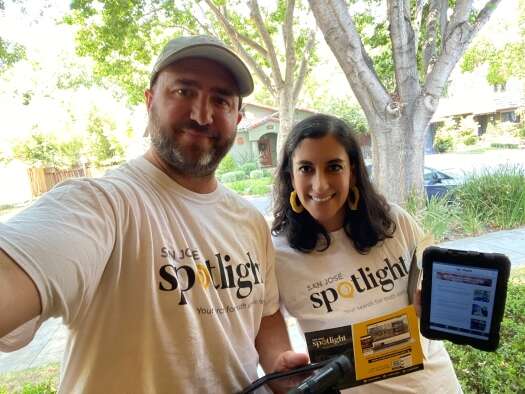
When Jay Senter and Julia Westhoff founded the Shawnee Mission Post in 2010, few would have bet on the husband-and-wife team turning their local news website for Johnson County, Kansas, into a sustainable business.
This year, they expect the Shawnee Mission Post and its new sister title, the Blue Valley Post, to generate revenues of $650-700,000 from subscriptions and advertising.
“It used to feel like the Wild West,” says Senter, describing the state of America’s local news startup scene just over a decade ago.
“There were corpses all along the side of the road, and you felt like you had no idea what you were doing. You kept moving forward – but you had no idea what you were doing.
“That is not the case anymore. There is a model out there that works.”
The struggles of America’s local media have been well documented – a Northwestern University report out yesterday found that 2,500 local newspapers have closed since 2004, creating hundreds of ‘news deserts’.
But the success and growth of titles like the Shawnee Mission Post, a for-profit business, is not isolated to Johnson County.
LION Publishers, which represents more than 400 local independent online news (LION) companies across the US and Canada, reports that its members generated median revenues of $125,000 in 2021, up 33% on the previous year.
(By comparison, a recent report from Britain’s Public Interest News Foundation found that local independent news publishers in the UK generated average revenues of £36,000 ($44,000) last year.)
“I think it’s proving itself to be a more viable path that journalism entrepreneurs can leverage,” Chris Krewson, LION’s executive director, tells today’s Future of Media Explained podcast.
“The technology [means] it’s never been cheaper, easier to launch your own publication as it is today.
“The ones that are the most connected in their communities – have strong relationships, are members of their chamber of commerce – are finding ways to make it work and fill information needs, while at the same time paying a living wage to themselves and other employees in their communities.”
How the Shawnee Mission Post hit 6,000 paying subscribers

Senter and Westhoff (pictured above) started their news website after identifying a dearth of local coverage in their area, Johnson County on the outskirts of Kansas City.
“I was shocked at how little coverage there was,” says Senter, who was originally from the area and moved back to start a family with Westhoff in 2009.
“The Kansas City Star used to have these tabloid inserts that would cover city council meetings and suburban cities and the local school districts, and stuff like that. Those had gone away.”
The Johnson County Press, he says, was “on its last legs” and was shut down in 2011.
Senter and Westhoff, who met while working on a college newspaper together, started the Prairie Village Post, as it was originally known, as a free-to-access website in 2010.
“Interest in that was super high,” says Senter. “Within a year it was clear that there was demand for this information, this coverage. I still had a full-time job, but I was spending more and more of my time going out and covering city council meetings and new business openings and all that kind of stuff.”
Senter was able to quit his day job to work on the website full-time in 2014. But by April 2017, he felt the Post had hit a wall.
“We were reaching a ton of people, we had great engagement, we had growing traffic. But we were still not able to generate more than $175,000 a year in revenue. It was just unsustainable to try to produce the level and quality of content you need for an area of that size. In 2017, we got to a point where we realised we were going to get totally burned out.”
With their last roll of the dice, Senter and Westhoff put their site behind a metered paywall and sent out an email to readers explaining their predicament.
Within three-and-a-half months, the Shawnee Mission Post had 1,000 subscribers. It topped revenues of $200,000 that year.
“I think the idea that we may be going away was unattractive enough that a lot of people stepped up early,” he says. “People understood we were in dire straits financially.”
Today, around 6,000 readers pay for full access to the Shawnee Mission Post and the Blue Valley Post, a sister publication launched in January this year. Senter, who now has around ten employees, is targeting 10,000 subscribers by 2025.
What is the secret of this subscription success?
Partly, says Senter, it’s about its audience. Johnson County is an “affluent” area where people “had been used to having somebody cover them”.
Senter also admits that his title is probably “underpriced”. A subscription to the Shawnee Mission Post costs $7 a month or $77 a year, versus $15.99 a month or $159.99 a year for full digital access to The Kansas City Star.
In 2022, Senter expects his media business to generate revenues of between $650-700,000, with around two-thirds coming from subscriptions and the rest from advertising. Last year, the company reported revenues of $475,000, not including a $50,000 grant from Facebook’s accelerator programme, up from $400,000 in 2020.
San Jose Spotlight: Revenues near $1m after three years

Like just over one-third of LION’s members, the San Jose Spotlight is a non-profit newsroom. It was founded by a husband-and-wife team, Josh Barousse and Ramona Giwargis (pictured above), in January 2019.
The Spotlight says its revenues grew 45% from $650,000 in 2020 to $944,000 last year. Barousse says the Spotlight’s biggest income stream is corporate sponsorship, but it also makes money from reader donations, events, advertising, and foundation grants.
Barousse, who previously worked in politics, and Giwargis, a journalist, came up with the idea for a non-profit news title for San Jose while living in Las Vegas. They believed they could emulate the success of the Nevada Independent, another non-profit.
“We figured, hey, if they can do that here in Nevada why can’t we do this in San Jose, our hometown?” says Barousse. “So we combined forces – she handled the editorial side, I handled the revenue-generation side. And that’s how we launched.”
Both Barousse, the Spotlight’s executive director, and Giwargis, CEO, were confident enough in their project to quit their jobs and invest all of their time in the Spotlight around the time of launch, although neither took a salary for the first six months.
“We knew we would get to this point, but we didn’t think it would happen in our third year,” says Barousse, when asked about achieving nearly $1m in revenue in 2021. “I thought maybe we’d get there in five, six years.
“To be frank, we had a lot of success in 2020. We thought the Covid-19 pandemic would really hinder our abilities to fundraise. But we saw such a spike in revenue because a lot of people knew nothing about Covid and we were the only source giving information as things progress.”
San Jose is America’s tenth largest city, with a population of more than 1m. It has a daily newspaper, The Mercury News, which is part of the Alden-owned Media News Group. But Barousse and Giwargis saw a gap in the market.
“The reality is that San Jose, Silicon Valley is a news desert,” says Barousse. “Our daily paper of record, The Mercury News, just over time, they’ve had round after round of layoffs… So we’ve really come in and filled that gap of local news coverage that people want. We’ve heard this through reader surveys.”
He adds: “The Mercury News, not only have they had round after round of layoffs, they also grew. If you open their paper, they try to be a regional paper. So they have Bay Area coverage, they’re covering stuff from other cities – San Francisco, the Peninsula and the East Bay.
“So really, they cut out their very local San Jose coverage, and that’s what San Joseans want. They want the local stuff that’s going on in their city, at City hall, in the neighbourhood, at the local school districts. That’s why we call it a news desert – they lack the local coverage.”
Is this the future of local news?
Barousse says he is “100% confident” that the San Jose Spotlight’s non-profit approach represents a viable future for local journalism in the US.
“We’re seeing this model growing throughout the country,” he says. “It’s the fastest growing trend in journalism, the non-profit newsroom. We’re very confident that it will be a sustainable model for journalism.”
Figures and anecdotal evidence from peers like The Philadelphia Inquirer, Texas Tribune and Salt Lake Tribune lend weight to Barousse’s argument.
But more than 60% of LION’s members are for-profit businesses. Unlike the Shawnee Mission Post, most name direct-sold advertising as their main source of revenue.
With fears of a recession growing, Krewson of LION tells the Future of Media Explained podcast that many of his members will be concerned about their main income stream.
“Advertising is typically one of the first things to go over the side when businesses hunker down and need to save capital,” he says. “[But] I have seen this incredibly resilient group of publishers weather storms before, I don’t have any doubt that they will weather this one as well.
“The kind of advertisers who tend to support small publishers are the same ones that need customers every day. The types of campaigns I think that are the most vulnerable during a recession are product launches, brand awareness campaigns. And you just don’t see a lot of perfume ads in LION publishers or new car ads necessarily…
“So I’m not going to say it’s recession-proof. But I will say it’s probably a little more recession-resistant than publishers that tend to rely on consumer ad spending dollars in a mass way.”
Krewson believes that his organisation’s figures – and the success stories of the Shawnee Mission Post and San Jose Spotlight – point to a bright future for independent local news.
“I’m excited by the proof that we’re able to offer as an organisation,” he says. “It’s not just an important thing for society, it’s not just important for journalism – it’s a good business for people. [Or] becoming a good business, I would say – I do think there’s a way to go.
“And I want it to be a good business. Because if it is a good business, if local news is a good small business, more people will start local news businesses. And if they do that, we can start tackling the news desert problem in a systemic way and really put the solution to that in the hands of news entrepreneurs.”
The ‘news deserts’ crisis
For all the encouraging signs of business sustainability shown by the Shawnee Mission Post, San Jose Spotlight and some of LION’s other members, concerns over the prevalence of ‘news deserts’ persist for now, as Krewson acknowledges.
Northwestern University’s State of Local News research, published yesterday, reported that digital-only publications are currently failing to fill gaps left by closing newspapers. Poorer areas are particularly badly affected by the news deserts problem, the research found.
Senter of the Shawnee Mission Post recognises this issue and retains serious concerns about the future of local news.
The Shawnee Mission Post was nearly forced out of business before launching its paywall in 2017 despite covering an affluent pocket of Kansas City. Senter is not sure his model could succeed in a poorer area.
“The good news is that there is a consensus model emerging of a way that you can do this,” he says. “There is a model out there that works. And I think you will hear most people in this space coming to the conclusion that a combination of ad revenue and reader revenue creates a sustainable way to operate a local news site.
“The bad news though is that the communities that have traditionally been underserved by the news media in general are likely to be underserved by this new pool as well.
“Kansas City, Kansas, is due north of us. Within four, five miles as the crow flies you go from one of the wealthiest zipcodes in the United States to one that is well below the mid-point. We could not operate the business we’re operating in Kansas City, Kansas, and be sustainable.
“The scary thing is that even in a market as ideal as Johnson County is for a product like this, we barely made it. We had our backs against the wall.”
Press Gazette is hosting the Future of Media Technology Conference. For more information, visit NSMG.live
Email pged@pressgazette.co.uk to point out mistakes, provide story tips or send in a letter for publication on our "Letters Page" blog
